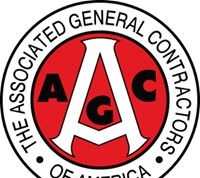HOUSE DEMOCRATS OUTLINE CRITICAL CARE ECONOMY INFRASTRUCTURE IN PRESIDENT BIDEN’S AMERICAN JOBS PLAN
WASHINGTON, DC – RealEstateRama – This week, the House Democratic Caucus Task Force on Aging and Families (TFAF) held a roundtable to discuss the need for critical investments in infrastructure for aging and disabled communities. Task Force Co-Chair Schakowsky, Co-Chair Matsui, Co-Chair Lamb, Vice Chair Dingell, Vice Chair Pressley and Vice Chair Deutch were joined by Ai-Jen Poo, the Co-Founder and Director of the National Domestic Workers Alliance, Rita Choula, Director of Caregiving at AARP and Ruth Katz, Senior Vice President of Public Policy at LeadingAge.
CO-CHAIR SCHAKOWSKY: Every single day, 10,000 people in America turn 65 years in age and yet, in the history of our country, we have never truly had a long-term care policy. Long-term care, especially home care, has been out of reach for too many people, seniors, people with disabilities and communities of color. And our ability to take care of our aging population and people living with disabilities has been heavily hampered by costs, the lack of caregivers and the lack of support for those who do paid caregiving…. This struggle starts ending right now. We are so excited that President Biden made a historic proposal to invest $400 billion in home and community-based services. The Task Force has led the charge on legislation that would help seniors and families, and we intend to do it again… Care infrastructure is infrastructure. Don’t let anybody tell you otherwise.
VICE CHAIR PRESSLEY: Too many home care workers across this nation work impossible hours to make ends meet. So many provide overnight care, commute home, sleep for a mere handful of hours and then provide in-home care throughout the day and somewhere between, must care for their own children and families. This is physically and emotionally demanding labor that we all know makes such an incredible difference for older adults and people with disabilities who can live in their homes and communities. Yet this workforce, particularly those who do not have the option to join a union, has been largely left to experience burnout and financial instability alone. I remain encouraged by the President’s proposed investment of $400 billion dollars in home and community-based care services and while I feel encouraged, we in Congress need to meet the President’s call and legislate a more equitable and just future and invest in our care economy like the critical infrastructure that it is.
CO-CHAIR LAMB: We have a long way to go, but that means that there’s plenty of places we can start and I think we have a good core group here that represents a diverse cross-section of our Caucus, because really, at the end of the day, we all have parents and grandparents and we all have older folks who raised us and taught us the values of this country and we want them to survive and do well into old age, and that requires a care economy. It’s the fastest growing job where I represent, in my state, so it would be ridiculous not trying to help the growth of this industry and sector and recognizing the humanity of its people.
CO-CHAIR MATSUI: Each Congress, this task force puts together the Older Americans Bill of Rights, a covenant with seniors that urges Congress to uphold the dignity of older Americans and their families. A core tenet of the resolution is a right to age with dignity and independence. We facilitate this right by investing in mechanisms that allow aging in place and that work starts with support for our caregivers. This pandemic made clear that it’s time to rethink and revamp how we care for people as they age and need help with their daily tasks. We can do this by putting seniors at the center of the systems designed for care for them, devoting more dollars to in-home caregiving and really ensuring that caregivers have a pathway to higher wages, stronger benefits and a safe working environment.
AI-JEN POO, CO-FOUNDER AND DIRECTOR OF THE NATIONAL DOMESTIC WORKERS ALLIANCE: With the president’s American Jobs Plan and the proposed $400 billion investment in Medicaid, home and community-based services, we have a historic opportunity to expand access to essential services for people with disabilities and older people and to raise wages and improve the quality of jobs for the direct care workforce once and for all… I do believe this is the highest impact jobs investment we could make particularly if we want an equitable recovery for women, older women and women of color… There is the direct benefit of improving and creating good home care jobs for this overwhelming women, majority women of color, workforce… These are jobs that won’t be automated, they can’t be outsourced, they are here to stay… We can make these jobs good union jobs.
RITA CHOULA, DIRECTOR OF CAREGIVING AT AARP: My story is not unique. I was but one of 48 million unpaid family caregivers providing $470 billion in unpaid care annually. They are the backbone of the long-term care system. The tasks associated with caregiving are often depicted as simple when care needs are, many times, quite complex. The complexity of care is intensified when caring for someone with dementia or a mental health concern. We can no longer ignore the experience of family caregivers from communities of color who don’t fall into an average bucket. The caregiving journey of Black, Latinx, Asian-American Pacific Islander and Native American Alaskan Native peoples is often framed by cultural expectations to care for one’s elder in their community. However, with existing structural inequities and lack of access to quality in language services and supports, this expectation can come at a cost to the financial and health related well-being of the family caregiver.
RUTH KATZ, SENIOR VICE PRESIDENT OF PUBLIC POLICY AT LEADINGAGE: We value equity, but our long-term care financing system couldn’t be further from that ideal. And the pandemic didn’t create this problem. It merely took it from the shadows. We need to fix this disorganized system that most people don’t even figure out is disorganized until they or a loved one needs care or when there’s a shock like the pandemic. It’s time to pave the way to make this a good country to grow old. President Biden did take a historic step by including long-term services and supports in the American Jobs Plan and we acknowledge your courage and your foresight as you work to shape those bold proposals into legislation. The aging infrastructure indeed is an essential part of the nation’s infrastructure, and the pandemic has presented an urgency to knit together today’s patchwork of services and set a foundation for an aging infrastructure.
VICE CHAIR DINGELL: The direct care workforce represents, as has been said here, the fastest growing occupation in the United States. According to the Bureau of Labor Statistics, the direct care workforce is projected to add over a million new jobs in the next decade, and we’re going to need it. When you see what’s happening and the number of people that are going to be turning 65 in the next few years, but the median wage for all direct care workers is less than $13 an hour and they don’t have any benefits.
VICE CHAIR DEUTCH: What struck me the most about President Biden’s choice to include $400 billion for home and community-based services in the infrastructure plan was that it’s a long and overdue spotlight on this essential part of our economy, which is what our speakers talked about… Well before the pandemic, you highlighted the need to recognize work that is done in homes across the country… You said that work in the home is the work that makes all other work possible, and yet it is almost defined by its invisibility.
###
To watch the full roundtable, click here.














